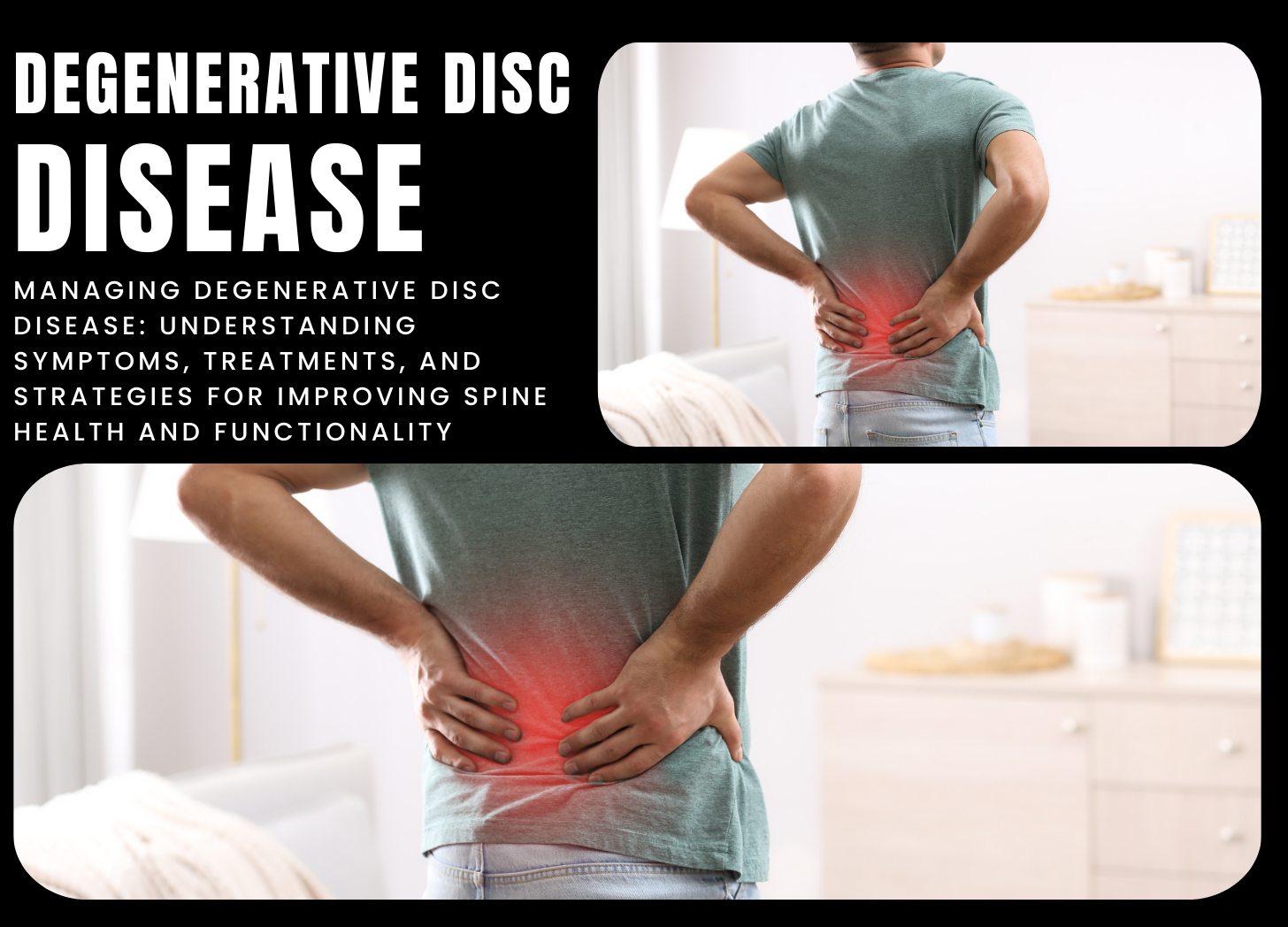Contact Us
Contact Us

Degenerative disc disease (DDD) is a common disorder that causes slow degradation of the spine’s intervertebral discs. Intervertebral discs are soft, gel-like cushions that act as shock absorbers between vertebrae, allowing the spine to move smoothly and with flexibility. With age, these discs can wear down, lose moisture, and develop tears or breaks, resulting in symptoms such as pain, stiffness, and restricted movement. Degenerative disc disease mostly affects the lumbar (lower back) and cervical (neck) areas of the spine.
The specific etiology of degenerative disc disease is unknown, although it is thought to be caused by a mix of factors, including age-related disc changes, genetics, and lifestyle choices such as smoking, obesity, and repetitive stress on the spine. As people age, their intervertebral discs gradually lose moisture and flexibility, leaving them more susceptible to wear and strain over time. This progressive degradation can result in bulging or ruptured discs, bone spurs, and spinal inflammation.
Degenerative disc disease symptoms may include pain, stiffness, and discomfort in the affected area of the spine, particularly with movement or extended sitting or standing. Pain may spread to other parts of the body, such as the buttocks, hips, or legs (lumbar DDD) or the shoulders, arms, or hands (cervical DDD). Numbness, tingling, or weakness in the limbs may also develop, especially if the degenerative disc compresses surrounding nerves or the spinal cord.
Degenerative disc disease is typically diagnosed using a medical history, physical examination, and diagnostic tests such as X-rays, magnetic resonance imaging (MRI), or computed tomography (CT) scans to evaluate the spine’s structure and identify any abnormalities or degenerative changes in the intervertebral discs. Discography, a specialist imaging technique that involves injecting contrast dye into the afflicted disc, may be used to determine disc integrity and the source of pain.
Treatment for degenerative disc disease seeks to treat symptoms, restore function, and prevent additional disc degeneration. To relieve pain and inflammation, conservative therapy options may include nonsteroidal anti-inflammatory medicines (NSAIDs), muscle relaxants, and pain relievers. Physical therapy and exercise regimens may be recommended to improve strength, flexibility, and posture, as well as to relieve pressure on the spinal discs. Braces or lumbar supports may be prescribed as assistive equipment to give spine support and stability.
If conservative therapy fail to reduce pain and restore function in severe or resistant degenerative disc degeneration, surgical surgery may be considered. Surgical techniques such as discectomy (removal of a portion or all of the injured disc), spinal fusion (connecting two or more vertebrae), or artificial disc replacement may be used to address the underlying structural abnormalities and stabilize the spine.
To summarize, degenerative disc disease is a common disorder characterized by the slow degradation of the intervertebral discs of the spine, resulting in pain, stiffness, and limited mobility. While degenerative disc disease can be difficult to manage, early detection, conservative therapies, and surgical procedures, where needed, can help reduce symptoms and improve quality of life for those affected.
References:
1.Mayo Clinic. (2022). Degenerative Disc Disease. Retrieved from https://www.mayoclinic.org/diseases-conditions/degenerative-disc-disease/symptoms-causes/syc-20371404
2.American Academy of Orthopaedic Surgeons. (2022). Degenerative Disc Disease. Retrieved from https://orthoinfo.aaos.org/en/diseases–conditions/degenerative-disc-disease
Post a Comment